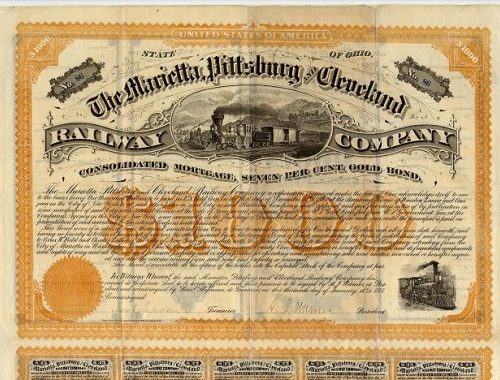
Financial Jargon
Imagine how lost one of your non-veterinary friends would feel if they walked and heard you speaking to colleagues about a fascinating case. “Today I saw a GSD with IHMA. His PCV was 14 and his SpO2 was 91…..”What does this all mean?? Each profession has it own jargon, and if you don’t understand it it’s easy to get lost in the conversation. In today’s section I’m going to try and demystify some of the more commonly used stock-related financial jargon.
Dow Jones Industrial Average (DJIA)
The “Dow Jones Industrial Average” (DJIA) is a single number that reflects the performance of 30 of the most significant stocks traded on the New York Stock Exchange (NYSE) and the NASDAQ. In the United States, the DJIA is the most watched indicator of how well or poorly the stock markets are performing. When people say “the stock market was up today” people are usually referring the DJIA. On April 3rd, 2018 the DJIA was 23,839.15. Since no stock in the average is worth anywhere near $23,000 a share – how is this number possible? For reasons that beyond the scope of this discussion, the denominator in the “average” is not 30 (the number of stocks in the average), its actually less than one. Curious investors can find an explanation here. Although the DJIA dates back to 1896, the stocks included have changed many times. There are other stock market indices used here and in other countries. For example S&P 500 is a stock market index based on the 500 largest companies listed on the NYSE and NASDAQ. The Nikkei, is the stock market index for the Tokyo Stock Exchange. The goal of all of these is to provide a single indicator of how a stock or bond market is performing.
Bull market, bear market & correction
Bull market, bear market and correction are terminology that investors often hear used to describe how stocks are performing overall. A bull market is one in which stock prices are rising and expected to keep charging upwards like a bull.A short-term decrease in the DJIA of at least 10% in the market value is referred to as a “correction.” When the DJIA is down at least 20% from its recent high and the decrease lasts more than two months, we call it a “bear market.” Like a bear these markets claw downward. I promise I’m not making this up.
Growth stocks
Growth stocks are stocks whose corporations are expected to have earnings that that grow at above average rates. Generally, these companies do not pay dividends rather they invest their earnings in new projects. An example could be any one of a number of technology companies including Google. The advantage to the stockholder, in theory, is an increasing stock price. Its important to keep in mind that a stock that increases in value and then is sold, in increase in value is subject to a capital gains tax.
Value stocks
Value stocks are those that are underrated or ignored. Sometimes called “dogs of the dow” these stocks are priced less than their peers. Often these companies have experienced an adverse event, such as negative publicity, which has temporarily affected their stock price. Finding stocks whose stock price is truly only temporarily affected is the key. Sometimes stocks with lower prices than their peers are truly in trouble.
Income stocks
An income stock is a stock that pays regular, often steadily increasing dividends. When we spoke about growth stocks we were talking companies that invest their earnings in new projects. These stockholders expect their reward to be an increased stock price. With income stocks, these companies return earnings to their stockholders and they do so with clockwork regularity. Much of the perceived value of the stock comes not from the anticipation of increasing stock price but rater a steady stream of dividend income. Sometimes, things do not go as planned. Look no further than GE to see what happens to the price of an income stock that fails to maintain its dividend. In April of 2017 GE was worth about $30 a share, in April of 2018 it was around $14 a share. Much of this was due to a cut in its dividend.





One Comment
Pingback: